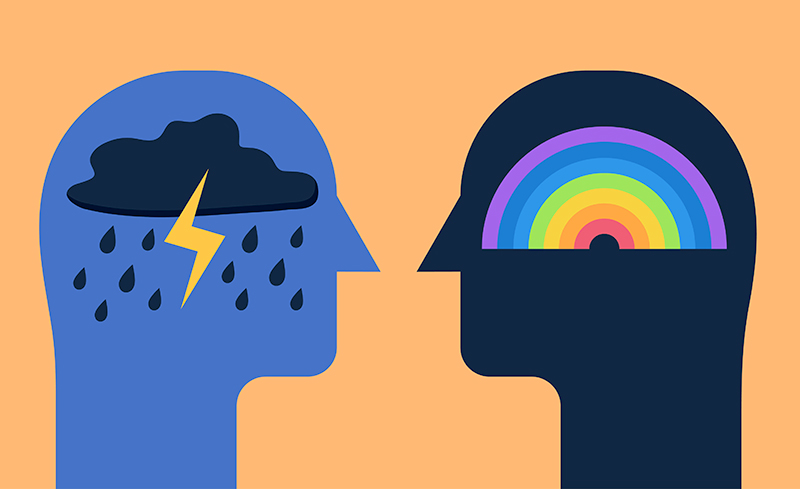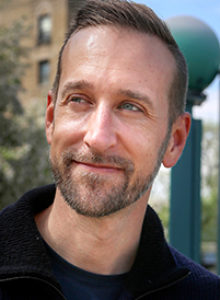Stigma around mental health is not an unfamiliar conversation in professional circles and, thanks to the hard work of countless teams and individuals, stigma is becoming a more common conversation in our communities, albeit a recent conversation. Prior to this work, stigma didn’t have a context to be recognized as such – it was more commonly the norm to respond with exclusion, condemnation or much, much worse. Whether actively or passively, a majority of us have inherited the burden of this unfortunate legacy and it can guide our thinking – as beliefs do every day – often without us knowing. When it does, we may find that amidst the storm we can identify our challenging symptoms as symptoms, but there is also something else affecting us, something that feels more factual than fleeting – the idea that we shouldn’t be this way, that we are somehow wrong in our experience, and that it can’t be discussed. These experiences are the manifestation of internalized stigma.

Recognition of this is often the first step in genuine healing and recovery. If you’ve ever felt like you couldn’t share your inner experience, or if you have ever thought along the lines of “they/I shouldn’t be that way…” it’s worth considering that you may have, with or without consent, internalized some stigmatized beliefs. After all, it was the norm in society to shame and condemn until only very recently. How could we not have been at least partially impacted? Thankfully, many of us are learning alternative, inclusive actions to counterbalance this. However, beliefs don’t often change through external actions alone. Internal work needs to be done.
That internal step starts with a shift in context, a move from the personal to the collective. More specifically, this means recognizing that we didn’t choose this experience we are having, for if we had such a choice we would have chosen (and kept) happiness long ago. Suffering (and all the struggle that comes with it) isn’t ours to personally claim and it isn’t ours to outwardly shame – it’s part of the human condition that nobody escapes.
If you’re familiar with Dr. Kristin Neff’s research around self-compassion, she and her team have shown that this shift in context is vital to our wellbeing. She suggests a mantra that can open the door to meeting our experience in a more compassionate and helpful manner: “This is a moment of suffering. Suffering is part of life. May I be kind to myself in this moment” (Neff, 2002). Whether you use this example or create your own, this inwardly directed kindness opens the door to extinguishing internalized stigma, therefore creating more space and energy to directly approach the other parts of our experience. It can also help us to recognize that connecting with others – something internalized stigma blocks – is actually a safe and necessary endeavor, so long as we connect with those who care.
If we are contacted for help, we’d be similarly wise to remind ourselves of our shared humanity as underlying, stigmatized beliefs can quickly foster thoughts that drive limiting labels. In fact, one such label that can be limiting is “mental health,” which can be seen as positive, but it’s not uncommon that the term is used in sentences like, “I’m dealing with my mental health.” Or, “It’s a symptom of my mental health.” Even, “It’s a mental health issue.” Such references are influenced, at least in part, by the burden of stigma as they create a context that mental health is something with a negative impact. It’s not. Mental health is a catchall term that speaks to a shared trait within humanity, our baseline of wellbeing, something each of us needs to balance from time to time as we make our way through life. Those times of imbalance may be driven by things that have names like anxiety, depression, and the like, but those aren’t our mental health, those are the things that disrupt it.
Although stigma is an unfortunate occurrence, we now recognize it for what it is – a genuine barrier to care and community. As our work continues and we look to others to change their stigmatizing beliefs, it will support our aim of eradication if we first take the inward step and recognize our own limiting beliefs before focusing our attention in an outward direction. If we can see the ways we have been personally affected, we have the opportunity for greater connection, as it can help to drive commonality and avoid the occasional pitfalls of judgment and moral superiority that provoke defensiveness and close conversations. By supporting a positive context for mental health in our communities, it will no longer be defined by disruptions, rather, it can be seen as simply a part of our overall wellbeing. Organizations can model this with their employees – many of whom may already take “mental health days” (approved or not) – by allowing for health time to be inclusive of experiences beyond physical symptoms. Doing so reflects our best values and is also an investment in their longevity. But most of all we can remember that everyone is doing their best, and sometimes, life is still overwhelming. This isn’t a failure or shortcoming, it’s actually a disruption to the long-standing myth that we should be unaffected by life. If we succeed in our endeavor to eliminate stigma, everyone – not just some – will be able to finally say, “I’m strong because of my experiences, not because I’m without them.”
John Orr, MA, LMHC, is Vice President of Programs at Vibrant Emotional Health.
References
Neff, K. (2022). Exercise 2, Self-Compassion Break. Self-Compassion. Retrieved June 12, 2022, from https://self-compassion.org/exercise-2-self-compassion-break/





